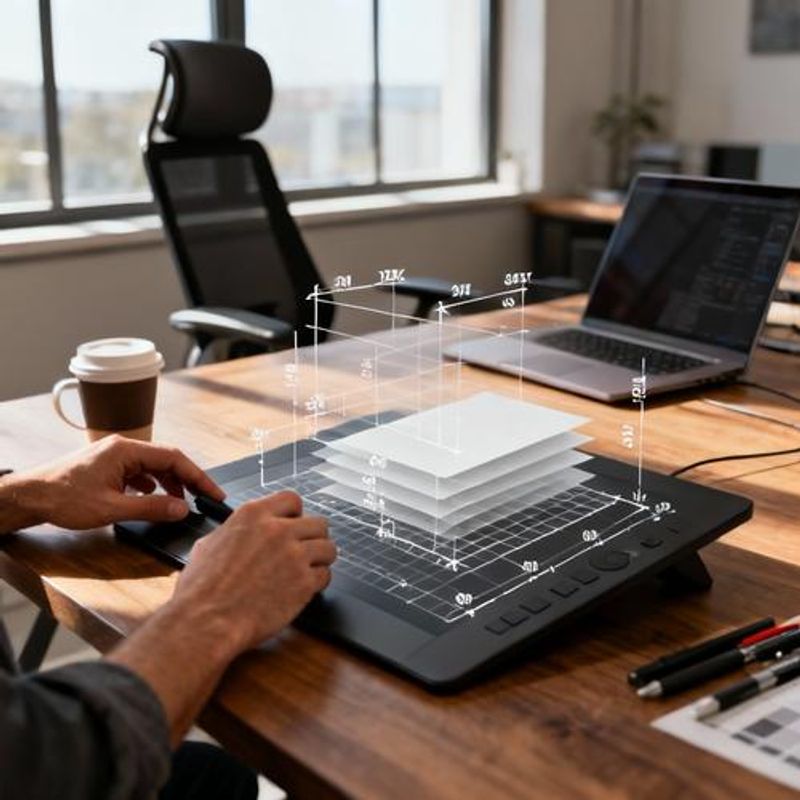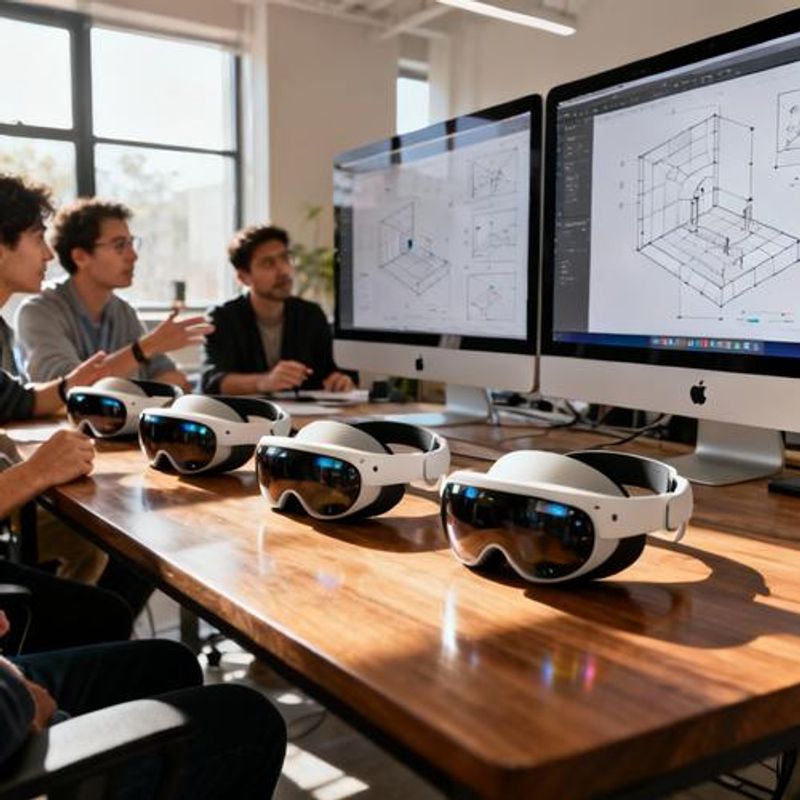Spatial Design Principles for Apple Vision Pro: A Designer's Complete Implementation Guide

As a design leader, you're tasked with transitioning your team's expertise to spatial computing—but Apple Vision Pro's design paradigms feel fundamentally different from anything you've shipped before. This comprehensive guide breaks down the core spatial design principles for Apple Vision Pro, providing actionable frameworks and real-world implementation strategies that will accelerate your team's adaptation to this revolutionary platform while maintaining the design quality your stakeholders expect.

Why Spatial Design Principles Matter for Design Leadership
The shift to spatial computing represents the most significant design paradigm change since the transition from desktop to mobile. Unlike traditional screen-based interfaces, Apple Vision Pro demands designers think in three dimensions, consider environmental context, and design for natural human gestures and eye movements. For design leaders, this isn't just about learning new tools—it's about restructuring design processes, updating design systems, and ensuring your team can deliver compelling spatial experiences while meeting aggressive launch timelines. The stakes are high: early adopters who master spatial design principles will establish competitive advantages that will compound as the platform matures.
Core Spatial Design Principles: Quick Reference
Master these five foundational principles to ensure your spatial designs feel native to Apple Vision Pro:
- **Dimensional Hierarchy**: Use z-axis positioning to establish information priority and visual flow
- **Environmental Harmony**: Design interfaces that complement rather than compete with physical surroundings
- **Gesture-First Interactions**: Prioritize natural hand movements over traditional tap-based navigation
- **Spatial Affordances**: Use depth, scale, and positioning to communicate functionality intuitively
- **Contextual Adaptation**: Dynamically adjust interface density and complexity based on user activity and environment

Implementing Dimensional Hierarchy in Your Design System
Traditional design systems rely on color, typography, and spacing to establish hierarchy. Spatial design adds the z-axis as a primary organizational tool. Establish three distinct depth zones: **Background Layer** (environmental elements, 0-50 points from user), **Content Layer** (primary interface elements, 100-300 points), and **Focus Layer** (active elements, 400-600 points). Each layer should use consistent depth intervals—Apple recommends 100-point increments to ensure clear separation without overwhelming users. Your design tokens should now include z-position values alongside traditional properties, and your component library must account for how elements behave when repositioned along the depth axis.
Designing for Environmental Harmony
Unlike mobile apps that command full attention, spatial interfaces coexist with physical environments. Design translucent backgrounds (70-85% opacity) that preserve environmental awareness while maintaining content legibility. Implement adaptive lighting that responds to ambient conditions—interface elements should become more opaque in bright environments and more subtle in dim settings. Consider spatial anchoring strategies: some elements should remain fixed to the user's view (heads-up display pattern), while others anchor to physical surfaces or float independently in space. This requires new user testing methodologies that evaluate designs across diverse physical environments rather than controlled screen conditions.
Gesture-First Interaction Patterns
Spatial interfaces unlock natural interaction patterns impossible on traditional screens. Design for **direct manipulation**—users should grab, rotate, and resize objects using natural hand movements. Implement **proximity-based reveals** where interface elements appear as users reach toward them, reducing visual clutter while maintaining discoverability. **Gestural shortcuts** replace complex navigation: pinch to close, spread fingers to expand, circular motions to rotate. Your interaction specifications must now include hand position tolerances, gesture recognition thresholds, and fallback patterns for users with different physical abilities or preferences.
Implementation Templates and Design Specifications
**Spatial Grid System**: Establish a 3D grid with 44-point minimum touch targets extended to 60-point minimum spatial interaction zones. **Depth Mapping Template**: Create standardized z-position values for common UI patterns—modals at +400 points, tooltips at +200 points, background elements at -100 points. **Gesture Library**: Document standard gestures with tolerance ranges—tap (250ms max duration), pinch (minimum 20% scale change), swipe (minimum 50-point displacement). **Environmental Adaptation Matrix**: Define interface opacity, scale, and positioning rules for different lighting conditions and physical contexts. These templates should integrate with your existing design tools while extending capabilities for spatial dimensions.

Common Spatial Design Mistakes to Avoid
**Over-dimensionalizing**: Adding depth to every element creates visual chaos rather than hierarchy. Reserve dimensional changes for meaningful interactions and priority shifts. **Ignoring Fatigue Factors**: Spatial interfaces can cause faster eye strain and arm fatigue. Design with shorter interaction sessions in mind and provide clear exit points. **Environmental Blindness**: Testing only in controlled environments leads to interfaces that fail in real-world conditions. Include bright outdoor, dim indoor, and cluttered background scenarios in your testing protocol. **Gesture Overload**: Requiring users to learn complex gesture combinations recreates the problems spatial computing should solve. Stick to intuitive, discoverable movements that build on existing mental models.
Next Steps for Design Teams
Start by updating your design system documentation to include spatial dimensions and establishing a testing environment with actual Apple Vision Pro hardware. Begin with simple spatial adaptations of existing interfaces before attempting fully native spatial experiences. Create cross-functional alignment between design, engineering, and product teams around spatial design principles to ensure consistent implementation. The transition to spatial computing will take time, but teams that establish strong foundational principles now will be positioned to lead as the platform evolves. Consider implementing a pilot project that explores one core spatial principle deeply rather than attempting to address all principles simultaneously—this focused approach will generate learnings that inform broader spatial design strategies across your product portfolio.